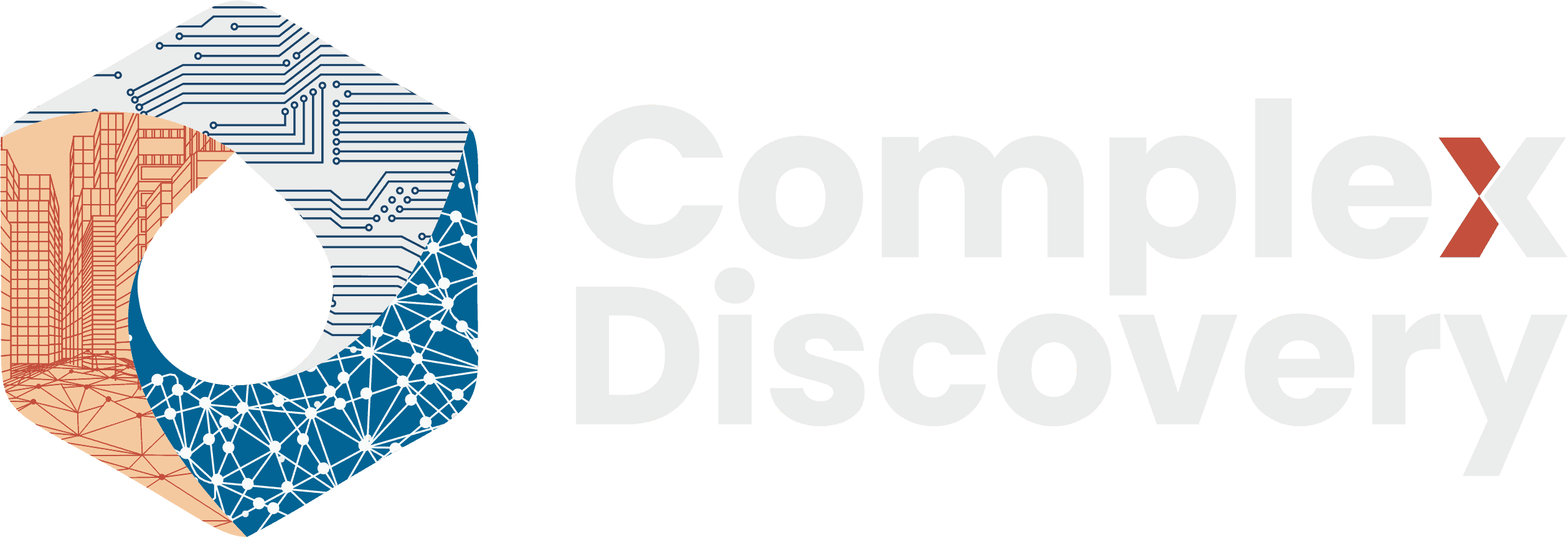Editor’s Note: eDiscovery collection is no longer a quiet first step—it’s a strategic linchpin in the digital discovery process. As legal, compliance, and IT teams grapple with an explosion of data sources and rising regulatory demands, the cost and complexity of collection are surging. This article from ComplexDiscovery Staff offers a timely and data-rich exploration into how collection functions today, what it costs, and how its share of overall eDiscovery spend is expected to grow dramatically through 2029. For cybersecurity, information governance, and legal discovery professionals, understanding these dynamics is essential to preparing for the next wave of digital investigations and compliance readiness, especially as collection spend is set to nearly double in dollar terms and expand significantly in share through 2029.
Content Assessment: 2025 eDiscovery Collection Update: Tasks, Cost Data, and Spending Patterns
Information - 94%
Insight - 92%
Relevance - 94%
Objectivity - 95%
Authority - 95%
94%
Excellent
A short percentage-based assessment of the qualitative benefit expressed as a percentage of positive reception of the recent article from ComplexDiscovery OÜ titled, "2025 eDiscovery Collection Update: Tasks, Cost Data, and Spending Patterns."
Industry Research – Markets
2025 eDiscovery Collection Update: Tasks, Cost Data, and Spending Patterns
ComplexDiscovery Staff
Within the context of data discovery and legal discovery, the task of collection involves identifying, preserving, and acquiring electronically stored information (ESI) from a variety of sources. This task marks the starting point of the eDiscovery process and sets the foundation for subsequent tasks such as processing and review. Collection is increasingly complex and vital due to the exponential growth of digital data, the dispersion of data across cloud and mobile environments, and heightened legal expectations for defensibility.
As part of the core eDiscovery triad—collection, processing, and review—the cost of collection has historically represented a smaller fraction of overall spending. However, recent market analyses show that this is rapidly changing. In 2012, collection represented just 8% of eDiscovery expenditures. By 2024, that number rose to 16%, and by 2029, collection is expected to comprise 24% of total eDiscovery task spending, matching that of processing.
Evolution of Collection Costs
The shift in collection’s share of overall eDiscovery spending is driven by multiple factors, including:
- The rise in remote data sources, such as mobile devices, chat apps, and collaboration platforms.
- Regulatory and compliance pressures, which demand more thorough and defensible collection practices.
- Distributed workforces, which require the ability to collect from multiple locations across varying networks and endpoints.
What was once a relatively contained, device-centric effort has evolved into a sophisticated, forensic-driven operation. Today’s collection activities often require advanced endpoint access tools, remote capabilities, and strict audit trails—all of which add to the complexity and cost.
Legal and Technological Drivers
A growing number of legal cases involve the need to collect data from diverse platforms, including Microsoft 365, Slack, Google Workspace, Box, and ephemeral messaging apps. These environments demand highly tailored approaches that ensure data integrity, minimize disruption, and meet legal preservation standards.
Forensic collection solutions have also become more robust, incorporating remote agent deployments, stealth acquisition, and live system imaging. Such tools enhance accuracy and efficiency but often require trained professionals and specialized infrastructure.
Moreover, privacy regulations such as GDPR, CCPA, and HIPAA have added layers of compliance to the collection process, necessitating documentation of consent, minimization of data collected, and handling of sensitive information with increased care.
Collection Pricing Data Points: The Cost
The Winter 2025 eDiscovery Pricing Survey from ComplexDiscovery OÜ and EDRM provides critical benchmarking data on collection-related costs:
- Onsite forensic examiner rates: Most commonly reported between $250 and $350 per hour.
- Remote collection services: Show a similar range, with a trend toward lower-cost structures as remote technologies become more prevalent.
- Desktop and laptop collections: Generally priced above $350 per device, reflecting preparation, travel, and device handling costs.
- Mobile device collections: These are also commonly reported in the $250 to $350 per device range.
- Forensic analysis and expert witness services typically fall between $350 and $550 per hour, with high-end testimony or specialized services occasionally exceeding $550/hour.
These cost structures underscore the growing professionalization and specialization of collection services, which now operate at the intersection of legal, technical, and investigative domains.
Market Opportunity: Collection Spend
As the volume and complexity of data increase, so does the investment in collection technologies and services. According to the 2024–2029 eDiscovery Market Size Mashup, the total market spending on eDiscovery is projected to grow from $16.89 billion in 2024 to $25.11 billion by 2029, a CAGR of 8.25%.
Within that trajectory, spending on collection tasks is projected to more than double in dollar value and increase by 50% in share:
- 2024: $2.70 billion (16% of total eDiscovery spend)
- 2029: $6.03 billion (24% of total eDiscovery spend)
This surge reflects organizations’ increased focus on defensible and efficient upstream activities, with collection emerging as a critical area of investment alongside processing and review.
The Collection Journey
The task of eDiscovery collection is no longer a back-office function relegated to technical support teams. It has become a strategic operation requiring coordination between legal, IT, and compliance departments. The expanded cost share for collection underscores its central role in defensibility, responsiveness, and overall efficiency in legal proceedings.
As data sources multiply and compliance expectations rise, organizations will need to reevaluate their collection strategies, prioritizing automation, scalability, and expertise. Whether through in-house teams or specialized service providers, the ability to execute efficient, comprehensive, and legally sound collections will be a distinguishing factor in the competitive eDiscovery landscape.
To better understand this shift, the following data highlights key trends in task-level expenditures and pricing benchmarks for eDiscovery collection services, offering quantifiable insight into how priorities, budgets, and service models are evolving.
Task Expenditures for eDiscovery
eDiscovery Market Overview by Task
eDiscovery Market By Task (2024-2029)Relative Task Expenditures for Core Discovery Tasks
Relative Task Expenditures for Core eDiscovery Tasks - 2025 Report - UpdateCollection Pricing Data Points: The Cost
What is the per hour cost for an onsite collection by a forensic examiner?
Collection Pricing - Per Hour Cost for an Onsite Collection by a Forensic Examiner - Winter 2025What is the per hour cost for a remote collection by a forensic examiner?
Collection Pricing - Per Hour Cost for a Remote Collection by a Forensic Examiner - Winter 2025What is the per device cost for a desktop or laptop computer collection by a forensic examiner?
Collection Pricing - Per Device Cost for a Desktop-Laptop Computer Collection by a Forensic Examiner - Winter 2025What is the per device cost for a mobile device collection by a forensic examiner?
Collection Pricing - Per Device Cost for a Mobile Device Collection by a Forensic Examiner - Winter 2025What is the per hour cost for investigation, analysis, and report generation by a forensic examiner?
Collection Pricing - Per Hour Cost for Investigation, Analysis and Report Generation by an FE - Winter 2025What is the per hour cost for expert witness testimony (in-person and written) by a forensic examiner?
Collection Pricing - Per Hour Cost for Expert Witness Testimony (In-Person and Written) by an FE - Winter 2025As these data points make clear, eDiscovery collection is no longer a minor cost center or procedural necessity—it is a critical, resource-intensive function that directly impacts legal defensibility, regulatory compliance, and operational efficiency. With spending on collection tasks accelerating in both volume and importance, forward-looking organizations must take a proactive approach to modernizing their collection strategies. By investing in scalable technologies, skilled expertise, and integrated cross-functional coordination, legal and IT leaders can transform collection from a reactive step into a strategic advantage in the evolving discovery landscape.
News Sources
- ComplexDiscovery OÜ – Winter 2025 eDiscovery Pricing Report: A Market in Transition (ComplexDiscovery)
- Complete Look: ComplexDiscovery’s 2024-2029 eDiscovery Market Size Mashup (ComplexDiscovery)
Assisted by GAI and LLM Technologies
Additional Reading
- Beyond Borders: How Legal Strategy Shapes the Success Trajectory of Tech Startups
- Buyers Guide Archive – ComplexDiscovery
Source: ComplexDiscovery OÜ



























